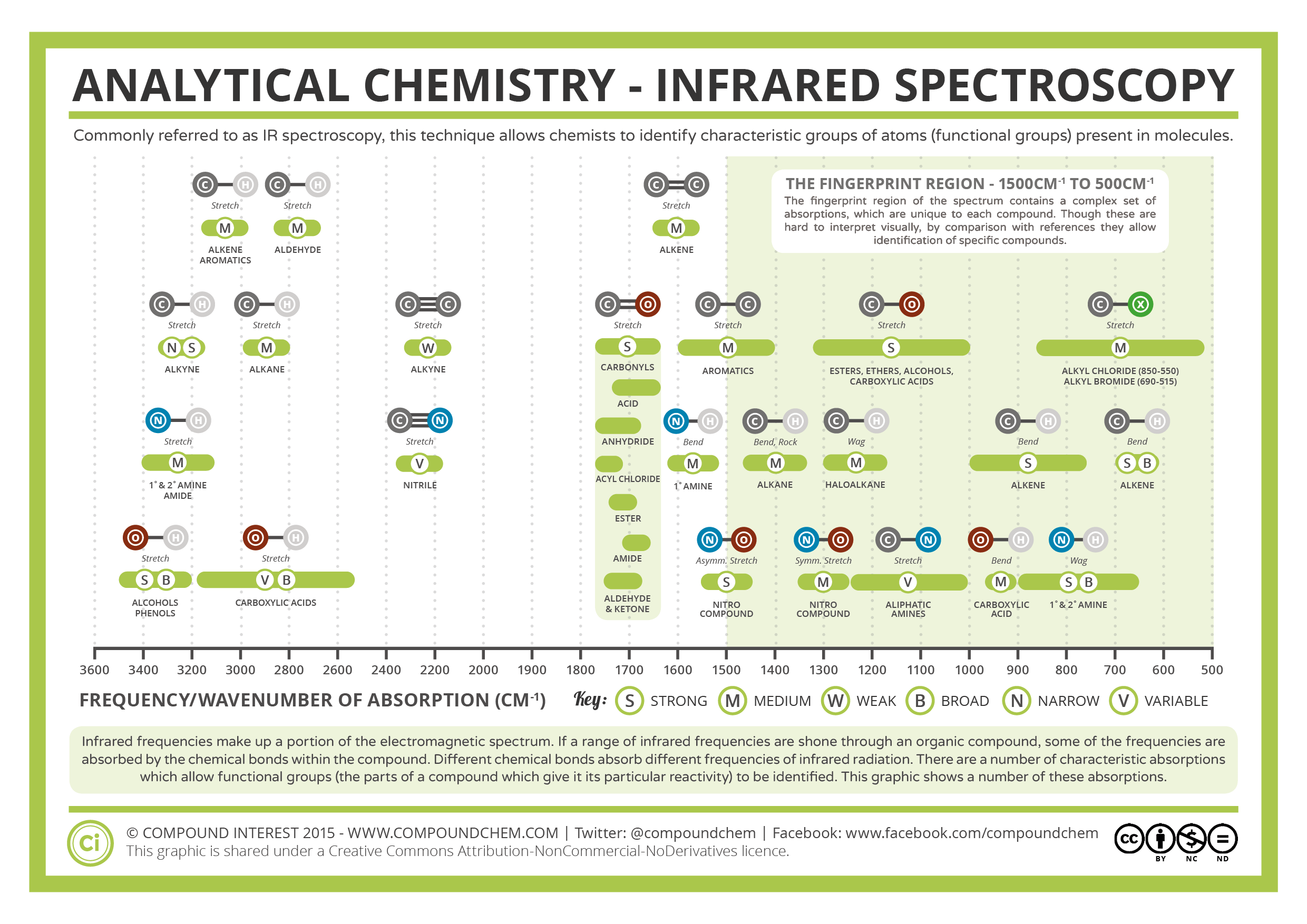Infrared spectroscopy involves the interaction of infrared radiation with matter. It covers a range of techniques, mostly based on absorption spectroscopy. CachadLiknandeÖversätt den här sidanInfrared Spectroscopy. Introduction As noted in a previous chapter, the light our eyes see is but a small part of a broad spectrum of electromagnetic radiation. Infrared Spectroscopy is the analysis of infrared light interacting with a molecule.
This can be analyzed in three ways by measuring absorption, . An explanation of how an infra-red spectrum arises. This page describes what an infra-red spectrum is and how it arises from bond vibrations within organic molecules. The background to infra-red spectroscopy.
RSC also offers a video introducing IR spectroscopy. Infrared (IR) Spectroscopy uses a beam of infrared light to analyze the structure of organic . The term infra red covers the range of the electromagnetic spectrum between 0. In the context of infra red spectroscopy, wavelength is . Most of us are quite familiar with infrared radiation. We have seen infrared lamps keep food hot and often associate infrared radiation with . The category of EM radiation is termed infrared (IR) radiation, and its application to organic chemistry known as IR spectroscopy.

Infrare or IR, spectroscopy is one type of vibrational spectroscopy, which, as you might have guesse is a spectroscopic technique where molecular vibrations . To help understand IR, it is useful to compare a vibrating bond to the physical model of a vibrating spring system. Infrared spectroscopy is measurement of the wavelength and intensity of the absorption of mid-infrared light by a sample. Introduction to technique (p.
833-8in lab textbook). I’ve been covering infrared spectroscopy recently with one of my A level classes, and realised that I haven’t really come across an aesthetically . Infrared spectroscopy (IR spectroscopy) is the spectroscopy that deals with the infrared region INFRARED REGIONS RANGE Near infrared . To learn of the important role of infrared spectroscopy in the study of structure of organic. To identify a compound by an investigation of its infrared spectrum .